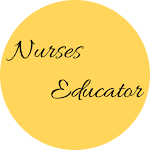Nursing Educational Program and Preparing the Self Study Report for Accreditation Process
Preparing the Self-Study Report In Nursing Education
One of the first steps in preparing the self-study document is agreement on the type of structure and approach to be used when writing the report. This can vary by institution, but the faculty and administration need to agree on structure and approach so that the self-study authors operate within a common framework.
Various approaches can be used to create the self-study, such as matching individual standards to specific standing committees for development of first drafts, assignment of one or two faculty members to write the self-study, assignment of faculty teams to write each standard, hiring a professional writer, or developing a self-study steering committee composed of individuals who represent all internal programs and administration.
Each representative on the steering committee heads up a writing team of faculty. It is helpful to identify faculty with expertise in writing and editing with strategic placement of these individuals on specific teams. Regardless of the approach used to develop a self-study, faculty members must be knowledgeable about and invested in the self-study process and kept abreast of progress on the document.
For example, accreditation can be a recurring faculty meeting agenda item. An author and editor with responsibility for the final self-study draft needs to be identified. This individual can ensure that the document is comprehensive, clear, and concise.
The author with final draft responsibility can perform a comprehensive review of the document, removing erroneous materials, deleting content that is duplicated, and ensuring that each standard has been adequately and accurately addressed.
All faculty need to be conversant with the self-study document and how accreditation standards and criteria have been addressed. If outside consultants have been involved in the development of the self study , it is especially important for faculty to familiarize themselves with its content so that they can respond accurately to questions from on-site reviewers, providing clarification where necessary.
The development of a timeline for completion of the accreditation self-study document and planning of the on-site visit is crucial. Adequate time must be provided to perform a self-review and self-assessment of all components of the nursing program, complete the self-study process, and write the self-study document.
If adequate time is allowed for self-study development, there is less pressure on the involved faculty and staff, resulting in a comprehensive and well written document. During the self-study process it is not desirable to make any major programmatic changes.
Major programmatic changes have the potential to change the focus of faculty members from self-review, self-assessment, and self-study development to implementation of the proposed change. The need for major changes may become apparent during the self-study process and can be identified as such. The self-study timeline is created by working backward and beginning with the possible dates for the on-site visit.
Necessary events to include in the timeline are the due dates for drafts of each standard; faculty meetings to discuss standards both during self-study development and in preparation for the on-site visit; documentation of program improvement and program outcomes; finalizing the self-study; setting a mock site visit date with an external consultant; development of due dates for printing and binding self-study copies for faculty, administration, and visitors; preparation of the resource room; and finalizing the agenda for the site visit.
The program may choose to rely more on digital versions of the self-study and supporting documents that can be housed on a secure network drive or flash drives, with backup hard copies. Correct interpretation of the accreditation standards is important during development of the self-study document and sets the stage for a successful on-site review.
Each of the nursing accreditation agencies provides self-study workshops, webinars, and forums for faculty to attend that provide important information related to interpretation of each standard, clarifying any areas of confusion and providing examples of evidence to support fulfillment of each criterion.
Faculty members who write self-studies need to understand the importance of addressing the involved accreditation standards. Narrative statements need supporting documentation that provides evidence of how the program meets criteria. The identification of program strengths, challenges and areas needing development, along with an action plan, provides evidence for the program evaluators that an overall commitment to continuous quality improvement exists.
It is helpful to have faculty members who serve as on-site accreditation reviewers who can be used as internal consultants during the creation of the self-study. These individuals can provide valuable insights into the development and organization of the self-study document. Providing evidence of how accreditation standards are met is an important aspect of the self-study.
Use of data for quality improvement helps self-study authors maintain their focus on quality while performing a thorough programmatic assessment. The visiting evaluation team needs a clear, concise picture of the program. The self-study team needs to demonstrate in the self-study document that programs use assessment data to close “feedback loops.”
Narrative self-study statements need supporting documentation that evidence how criteria are met. Documentation is needed on-site, but the self-study is strengthened when reviewers are provided with tangible examples of how accreditation criteria are met. For example, evaluations for a particular course may not consistently meet programmatic benchmarks.
If the evaluation data are used to bring about change, such as modified content delivery methods, or inclusion of new instructors, this supports use of evaluation data to close the feedback loop. If evaluative data are collected and not used in decision-making processes, the feedback loop is not closed. Data based programmatic decision making should be reflected in self-study responses to specific criteria as well as in the supporting documentation for the self-study.
Supporting documents that reflect compliance with specific criteria include committee, course, and faculty organization minutes, including the committee and course name and meeting dates. To the extent that these documents reflect use of assessment data to close feedback loops, the program can demonstrate a commitment to quality improvement.
Referencing other conducting organization information such as the catalog, including page numbers and data sources, facilitates a concise programmatic review. The use of tables, charts, and graphs is recommended wherever possible. Essential tables and figures should be placed in the body of the self-study.
Documents such as the strategic plan, curriculum evaluation system, and organizational chart should be appropriately referenced and placed in the appendices, where page limitations are not as much of an issue.
An external consultant who is knowledgeable about the involved accreditation, standards, policies, and procedures of the accreditation agency that will be making the on-site visit can be instrumental in completion of the self-study document and in preparation for the on-site visit.
The external consultant can review the self-study document in detail and offer objective recommendations for improvement. During a mock on-site visit, the external consultant can provide opportunities for faculty and administration to engage in a simulated accreditation visit.
This allows faculty and administration to practice their responses to questions that might be asked during the actual on site visit. The mock visit can help faculty identify their knowledge strengths and areas needing further development related to the self study content. A mock on-site visit can alert faculty about which faculty members are better suited for responding to certain types of questions.
The simulated visit shows faculty the importance of preparation, including each faculty member knowing the accreditation standards and program responses as well as engaging with the on-site evaluators during the site visit. During the mock visit, faculty members should be reminded to respond with short answers and use examples to further clarify their points.
The self-study document should be neatly formatted and easily accessible. The self-study narrative and supporting documents should be professionally printed to ensure an overall attractive appearance.
The ability of readers to move from standard to standard and from standard to specific supporting tables and appendices without difficulty is important to on-site evaluators and reviewers.
The use of printed tab dividers between each standard and for each appendix helps ensure accessibility of materials. Providing a detailed table of contents and list of all tables and appendices aids in ease of reading and decreases the time needed to search for specific documents.
If the self-study and supporting documents are provided in digital format to the on-site reviewers, the program can use hyperlinks in the narrative so that readers can easily access online reference documents. Program files such as course and faculty evaluations and faculty CVs can also be provided in electronic form for reviewers.




Give your opinion if have any.